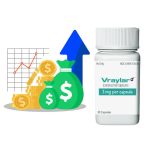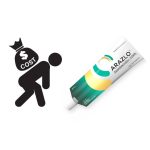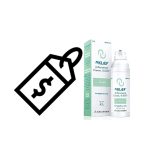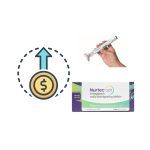Why is Jakafi So Expensive?
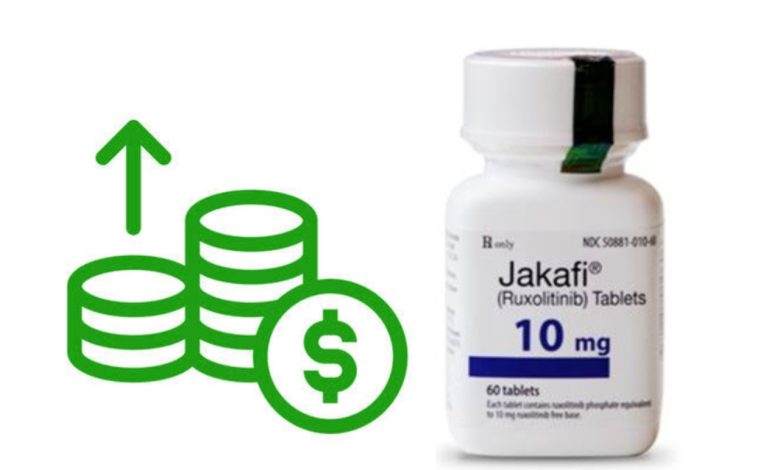
Jakafi is the brand name for the medication ruxolitinib. It is a prescription drug approved by the U.S. Food and Drug Administration (FDA) for the treatment of several conditions, primarily myelofibrosis, a rare bone marrow disorder, and polycythemia vera, a blood disorder characterized by an overproduction of red blood cells.
Ruxolitinib belongs to a class of drugs called Janus kinase (JAK) inhibitors. These drugs work by blocking the action of enzymes called JAKs, which play a role in the signaling pathways involved in blood cell production. By inhibiting these enzymes, Jakafi helps to reduce the abnormal production of blood cells and alleviate symptoms associated with myelofibrosis and polycythemia vera, such as enlarged spleen, anemia, and fatigue.
In addition to myelofibrosis and polycythemia vera, Jakafi is also being studied for its potential in treating other conditions, including graft-versus-host disease (GVHD) and certain types of leukemia.
In recent years, the rising cost of prescription medications has sparked widespread concern and debate, leaving many patients grappling with financial burdens and access barriers. Among these medications, Jakafi, stands out not only for its therapeutic efficacy but also for its hefty price tag. In this comprehensive analysis, we delve into the multifaceted factors contributing to the expense of Jakafi, shedding light on the intricate dynamics shaping its pricing landscape.
Factors Contributing To The High Cost Of Jakafi
The factors contributing to the high cost of Jakafi include:
The Pharmaceutical Landscape: To unravel the complexities behind Jakafi’s pricing, we must first navigate the pharmaceutical landscape, where a myriad of factors intersect to shape drug costs. One pivotal determinant is the interplay between supply and demand dynamics. As a specialized medication targeting niche indications, Jakafi faces limited competition, granting its manufacturer a degree of pricing power. With few alternatives available, the manufacturer can leverage this market position to set prices at levels commensurate with perceived value, driving up the overall cost of treatment.
Patent Protection and Research Costs: Another influential factor underpinning Jakafi’s pricing is patent protection and research expenditure. Pharmaceutical companies invest substantial resources in the research and development of novel medications, entailing significant financial risks and uncertainties. To recoup these investments and incentivize innovation, companies often secure patents, granting them exclusive rights to market and sell their products for a designated period. While patents serve as a cornerstone of pharmaceutical innovation, they also confer monopolistic control over pricing, allowing manufacturers to command premium prices for their patented medications. Consequently, even after patents expire, the absence of generic competition may perpetuate inflated prices, prolonging financial strain for patients and healthcare systems.
Production Costs and Regulatory Hurdles: The production of Jakafi entails intricate manufacturing processes and stringent quality control measures, which can drive up production costs significantly. From sourcing raw materials to ensuring compliance with regulatory standards, pharmaceutical manufacturers incur substantial expenses at every stage of the production pipeline. Moreover, stringent regulatory requirements imposed by health authorities necessitate extensive clinical trials and regulatory submissions, further inflating the overall cost of drug development. These cumulative expenses, coupled with the complexities of manufacturing biologic medications like Jakafi, contribute to the elevated price point observed in the market.
Clinical Value and Health Economics: Beyond production costs and regulatory hurdles, the pricing of Jakafi is also influenced by considerations of clinical value and health economics. As a life-altering therapy for myelofibrosis and polycythemia vera, Jakafi offers tangible benefits in terms of symptom relief, disease management, and improved quality of life. However, the perceived value of these clinical outcomes varies across stakeholders, including patients, healthcare providers, insurers, and policymakers. Moreover, health economic analyses play a pivotal role in evaluating the cost-effectiveness of Jakafi relative to alternative treatment modalities, weighing the incremental benefits against the incremental costs. While Jakafi may confer substantial clinical benefits, its high price point may pose challenges in terms of affordability and resource allocation within healthcare systems, prompting ongoing debates surrounding its cost-effectiveness and accessibility.
How to get Jakafi at a cheaper rate
Obtaining Jakafi at a more affordable rate can be challenging due to its high cost and limited availability of generic alternatives. However, there are several strategies you can explore to potentially reduce the financial burden of Jakafi:
1. Insurance Coverage Review: Review your health insurance plan’s coverage for Jakafi. Some insurance plans may offer partial coverage for prescription medications, including Jakafi. Contact your insurance provider to understand the extent of coverage provided, any copayments or deductibles applicable, and whether Jakafi is included in your plan’s formulary.
2. Patient Assistance Programs: Pharmaceutical companies that manufacture Jakafi may offer patient assistance programs or copay assistance programs to eligible individuals. These programs provide financial assistance or discounts on prescription medications for patients who meet certain income criteria or lack adequate insurance coverage. Contact the manufacturer of Jakafi or visit their website to inquire about available patient assistance programs and eligibility requirements.
3. Prescription Savings Cards: Prescription savings cards or discount cards can help reduce the cost of Jakafi and other prescription medications. These cards are typically available for free and can be used at participating pharmacies to obtain discounts on the retail price of medications. Websites such as GoodRx and RxSaver offer prescription savings cards that can be used for Jakafi and other medications.
4. Generic Alternatives: Although Jakafi is a brand-name medication without generic equivalents, there may be alternative treatments or medications available for the conditions it treats. Talk to your healthcare provider about generic alternatives or alternative treatment options that may be more affordable while still effectively managing your condition.
5. Mail-Order Pharmacies: Some mail-order pharmacies offer discounted prices on prescription medications, including specialty medications like Jakafi. By purchasing Jakafi through a mail-order pharmacy, you may be able to obtain it at a lower cost compared to purchasing it from a retail pharmacy.
6. Clinical Trials: Participating in a clinical trial for Jakafi or alternative treatments may provide access to the medication at no cost or at a reduced cost. Clinical trials are research studies that evaluate the safety and effectiveness of new medications or treatment approaches. Talk to your healthcare provider about any ongoing clinical trials for Jakafi or related treatments that you may be eligible to participate in.
7. Negotiation with Healthcare Providers: In some cases, healthcare providers may be able to negotiate lower prices for medications with pharmaceutical companies or provide samples or vouchers that can be used to offset the cost of Jakafi. Discuss your financial concerns with your healthcare provider to explore potential options for reducing the cost of Jakafi.
By exploring these strategies and working with your healthcare provider and pharmacist, you may be able to obtain Jakafi at a more affordable rate while still receiving the necessary treatment for your condition.
Conclusion
In conclusion, the cost of Jakafi represents a confluence of multifaceted factors spanning the pharmaceutical landscape, regulatory environment, clinical value, and health economics. While its therapeutic efficacy in treating myelofibrosis and polycythemia vera is indisputable, the affordability of Jakafi remains a persistent challenge for patients, healthcare providers, and policymakers alike. As stakeholders grapple with the complexities of drug pricing, concerted efforts are needed to promote transparency, foster competition, and prioritize patient access to life-saving medications. By addressing systemic inefficiencies, incentivizing innovation, and prioritizing patient-centered care, we can strive towards a healthcare system that ensures equitable access to essential treatments like Jakafi, enabling individuals to lead healthier, more productive lives free from the burden of exorbitant drug costs.

